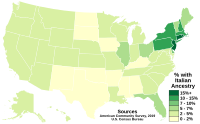
Photo from wikipedia
ABSTRACT This paper explores how the discrete-element method (DEM) was found to play an increasingly important role in cone penetration test (CPT) where continuum-mechanics-based analysis tools are insufficient. We investigated… Click to show full abstract
ABSTRACT This paper explores how the discrete-element method (DEM) was found to play an increasingly important role in cone penetration test (CPT) where continuum-mechanics-based analysis tools are insufficient. We investigated several crucial features of CPT simulations in the two-dimensional DEM. First, the microparameters (stiffness and friction) of discrete material tailored to mimic clean, saturated sand, which is used in cone-penetration tests, were calibrated by curve-fitting drained triaxial tests. Then, three series of cone-penetration simulations were conducted to explore (1) top boundary conditions, (2) reasonable size of discrete particles at different initial porosities, and (3) limit initial porosity of the model for a balance between accurate representation and computational efficiency. Further, we compared the cone-penetration resistance obtained in the laboratory and numerical simulations for the range of relative densities.
Journal Title: Geomechanics and Geoengineering
Year Published: 2018
Link to full text (if available)
Share on Social Media: Sign Up to like & get
recommendations!